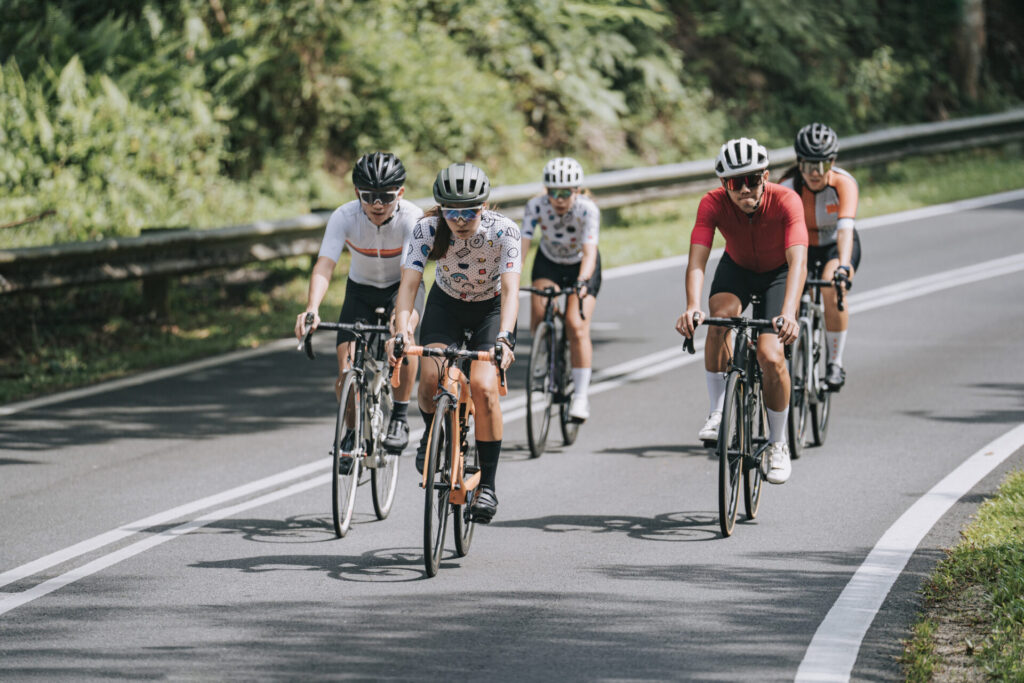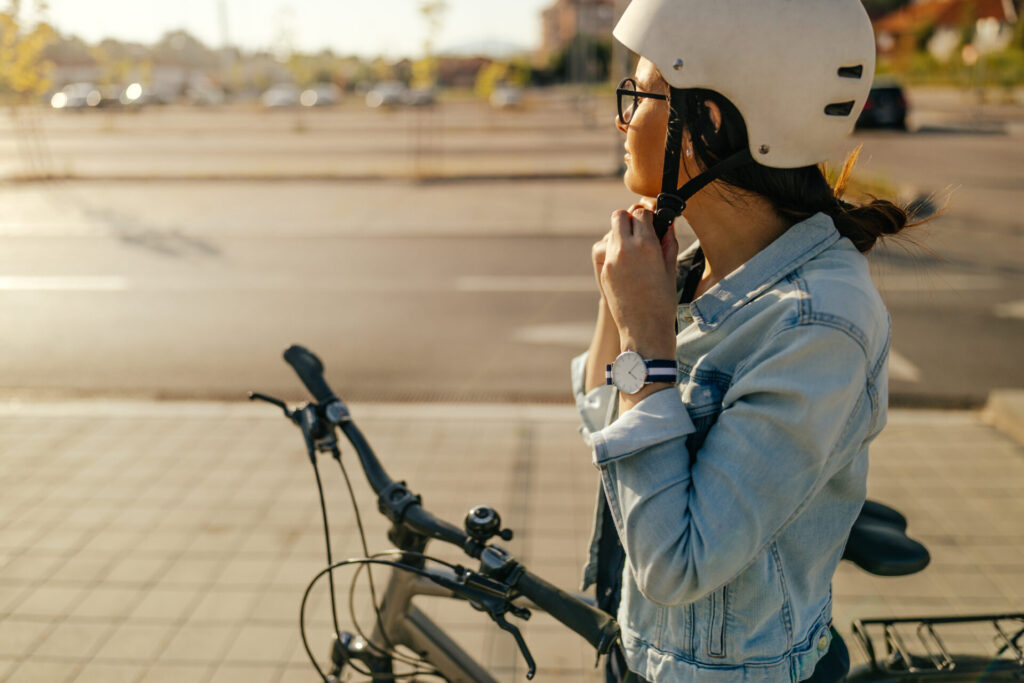The days are longer, and the streets are clear: Cyclists, grab your bikes!
Whether you’re all about cycling for leisure, exercise, transportation or you’re participating in crowd-pleasing fundraisers like the popular CN Cycle for CHEO event this spring, safe cycling comes first. To get a quick refresher, CAA sat down with elite athlete Angella Goran about her top tips.
“Preparation is the key to success on the roads, be it for a race or a casual ride. Ensure your bike is in peak condition, understand the rules of the road, and always assume you are not visible to motorists.”
Here are Angella’s top bike safety tips when riding on two wheels.
Make sure you’re visible
Being seen on the road is important for bicycle safety, especially when it comes to streets shared with drivers. It’s always a good idea to wear bright colours, especially in low light conditions like poor weather, early mornings and at dusk.
When cycling between a half hour before sunset and half an hour prior to sunrise, your bike should have a headlight and taillight turned on. It should also be equipped with reflectors – stick reflector tape or clip-on lights to the front and rear forks of your bike. Though not required by law, reflective clothing doesn’t hurt to have as well.
You’ll also want to be able to be heard by pedestrians, motor vehicles, and other cyclists, so ensure your bike is equipped with a bell or horn.
Wear your helmet properly
Wearing a properly fitting bike helmet seems obvious, but only 39 percent of men and 46 percent of women are likely to wear a helmet, according to Statistics Canada. Protecting your head is extremely important, and a bike helmet is the best way to avoid a concussion or worse.
Once on, check the visor sits a few inches above your brow and that the chin strap is snug but not too tight. You should fit no more than two fingers between the strap and your chin.
Essentials to bring
A fitted helmet and reflectors aren’t the only essentials for biking. Carry your cell phone, battery charger and ID with you in case of an emergency. Plus, if you’re a CAA Member, install the CAA Mobile App in case you need a roadside rescue for your bike with Bike Assist. Within the app, you can request help and track the truck as it comes to your location.
Carry a high-quality bike lock with you. Bicycle theft is far too common; securing yours with a quality titanium U Lock or chain can deter potential thieves.
You’ll want a water bottle handy to stay hydrated, especially when cycling for hours. Fit your bike with a water bottle cage so you can grab it easily and safely.
Finally, consider what you’re wearing while you ride. Avoid loose-fitting pants that can get caught in your bike chain, and always wear cycling or running shoes.

Share the road
When sharing streets with drivers, always follow the rules of the road, including riding with traffic on the right side and coming to a full stop at stop signs and red lights. Maintain a safe distance from other vehicles, and when passing parked cars, stay alert and keep a one-metre distance if possible.
Be a predictable cyclist, meaning ride in a straight line and use your bicycle hand signals when turning or stopping. It’s also a good idea to install a mirror on your bike’s left side so you can watch for traffic coming up behind you.
To be extra safe, or if you’re new to biking, avoid busy streets and opt for quieter residential and side roads, or stick to areas with proper infrastructure like dedicated bike lanes. Don’t ride on sidewalks: not only does it endanger pedestrians, but it’s also illegal in some cities.
Sharing the road is also critical at cycling events like CN Cycle for CHEO. While you may not need to be as concerned about motor vehicles when event routes are closed to traffic, safety should be a top priority when cycling. For instance, CN Cycle typically attracts 6,300 entrants with riding distances of 15 to 150 kilometres, with everyone from tykes tucked into cargo bikes to competitive cyclists on pricy carbon fibre bikes. So, while everyone is on a clearly defined route, the sheer number of people and bikes can create unpredictable moments to anticipate.
If you’re a driver, you can help keep cyclists safe by following similar tips – leave a one-metre distance between you and cyclists, be predictable by using signals and obeying traffic lights, and check blind spots and mirrors before turning, changing lanes or before opening your car door when parked.
I’ve got my safety tips down, so what is CN Cycle for CHEO?
CN Cycle for CHEO is an annual non-competitive cycle, walk and roll event in the capital region and CHEO’s largest oncology fundraiser. CAA North & East will be attending the event and even enter a team to participate. Watch for the CAA kiosk on site and stop by for some special swag and freezies from our famous CAA Icycle Tricycle.
This year, the event occurs on May 5, 2024, with all routes beginning at the Canadian War Museum.
Courses for all abilities and ages will be available, and the routes will be closed to traffic during the cycling event. The four cycling routes are 15-, 35-, 70-, and the newly added 100-kilometre long, with two walking pathway options that are 2- and 5-kilometres. The 100-kilometre length route is just being introduced this year for cyclists who want more of a challenge.
Take this unique chance to cycle along some of Ottawa’s most scenic parkways as you support CHEO. The proceeds help medical professionals better support the young patients and their families. Last year, over 6,000 participants registered, so start making your team now (or register as an individual) to join the festivities.
Once checked in, you’ll be issued a numbered bib, which is your ticket for complimentary food and drinks and live entertainment and activities for kids. The post-cycle (or walk) events will take place on the grounds adjacent to Lebreton Flats.


